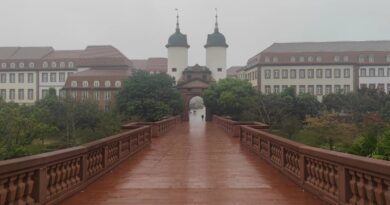The dark secrets of the US biological laboratories
JAYRO SANCHEZ
The public debate on the origin of the global pandemic of COVID-19 continues to unfold almost four years after it began. The most supported theory is that the virus that caused it arose naturally, being transferred to the first human being who contracted the disease from an infected animal.
Experts believe that its transmission subjects may have been bats and pangolins, scaly-skinned mammals that can be found in tropical parts of Africa and Asia. But, despite the numerous studies and experiments that have been carried out to test this hypothesis, researchers have not been able to confirm it.
American science journalist Alison Young defends a second version of the story about the origin of the disease in her book Pandora's Gamble: Lab Leaks, Pandemics, and a World at Risk.
Artificial modifications?
Young considers it possible and quite likely that the virus escaped from one of the many high-security biological research centers that are scattered around the planet. And he does not rule out that the genetic basis of SARS-CoV-2 could have been artificially modified before its release, whether it was accidental or deliberate.
His theory is not the classic set of disjointed conjectures concocted by conspiracy geeks. It is based on a large amount of journalistic material collected throughout his career: interviews with important scientific positions, statements from prestigious institutions or detailed explanations about the structures and biological functioning of pathogens.
And its main premise is that the construction of new high-security biological laboratories increasingly increases the chances that the dangerous substances they investigate will escape and cause a series of lethal pandemics on a global scale.
ineffective measures
As the journalist herself states, most people are convinced that the security measures and protocols at these facilities are the strictest and most effective on the planet.
However, that vision is in stark contrast to the reality observed by Young on visits to places like the Emerging Infectious Diseases Laboratory at the Centers for Disease Control and Prevention (CDC) headquarters in Atlanta, Georgia. , where he found a broken door giving access to a restricted area sealed with a piece of duct tape.
But this is not the only security breach that the veteran journalist has been aware of.
Scientists at another CDC lab were using an unregulated method that had proven ineffective at inactivating the viral load of the anthrax spores they were working with; Staff at the US Army's main biological research facility, located on the Fort Detrick, Maryland base, leaked water contaminated with deadly microorganisms into the nearby Monocacy River; monkeys at the Tulane National Center for Primate Research were infected with the bacterium that caused the severe disease melioidosis in 2014.
Poor biosafety culture
In her work, the reporter explains that there is little culture of biosafety among laboratory personnel, and that the institutions in charge of monitoring and regulating their security measures have covered up serious pathogen leaks from public opinion and have blocked attempts of obtaining information made by some journalists.
Anthrax, smallpox, coronavirus, avian flu, Ebola... All these dangerous diseases are the object of study in the biolaboratories that Young speaks of, which often do not have the appropriate protocols to act in the event of the release of a virus or the infection of one of his workers.
Pandora's Gamble It is a first-rate journalistic work. Complete, entertaining and critical, it reveals a scandalous story about the few measures taken by the world scientific community to avoid the dangers involved in the investigation of certain biological substances.
And it has the guarantees provided by a veteran reporter who has published her work in media such as USA Today o The Atlanta Journal-Constitution and who has received awards such as the National Press Club, the Scripps Howards or the Gerald Loeb.
More than 300 bio-labs around the world
Workers at these scientific facilities are only supposed to research lethal biological substances to facilitate the development of health treatments against them and the eradication of serious diseases, since the Convention on the Prohibition of the Development, Production and Stockpiling of Bacteriological Weapons and Toxin of 1972 condemns its use in the field of war.
But there is no effective control system that guarantees that countries with the necessary capacities to create biological weapons do not do so. In fact, various media outlets have published that the US directs the activities of 336 bio-laboratories throughout the world.
The Under Secretary of State for Political Affairs of the Biden Administration, Victoria Nuland, acknowledged before the US Senate Foreign Relations Committee that several centers of this kind had been created in Ukraine, but denied that their workers were involved in the development of biological weapons. .
The media that dealt with this matter affirm that there are about 30 laboratories on Ukrainian territory, and some assure that the researchers are working on the creation of selective action biological weapons to be used against certain ethnic groups in the country.
Ukraine is not, however, the only place where the US Army finances, manages and operates these kinds of scientific centers. The digital of Eastern Europe PolitNavigator has reported the presence of American biologists in Kazakhstan, where they allegedly invented new methods of spreading deadly cattle-related viruses.
The US has also been accused of building laboratories in Armenia, Georgia, Azerbaijan, Kenya, Liberia, Tanzania, Djibouti and other countries. According to official statements provided by the US government to the international press, they are carrying out studies related to monkeypox, Ebola and many other lethal pathogens.













